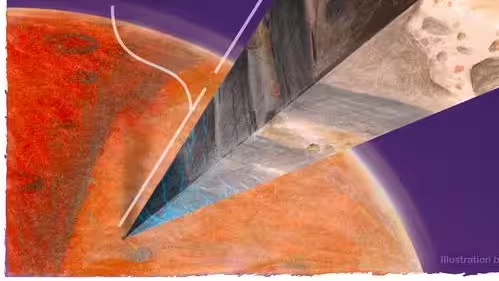Gulf of Mars: Rover finds ‘vacation-style’ beaches on red planet

An international team of scientists find Zhurong rover’s ground-penetrating scans indicate an ancient northern ocean on Mars.
Scientists find oceans of water on Mars. It’s just too deep to tap.

Researchers from UC Berkeley, USA, discovered vast underground water reserves on Mars, buried too deep for future colonists to access easily.
One small material, one giant leap for life on Mars: Sussex research takes us a step closer to sustaining human life on the red planet

From University of Sussex 09/01/24 Researchers at the University of Sussex have discovered the transformative potential of Martian nanomaterials, potentially opening the door to sustainable habitation on the red planet. Using resources and techniques currently applied on the International Space Station and by NASA, Dr Conor Boland, a Lecturer in Materials Physics at the University […]
Novel supersonic parachutes for Mars: Innovators model aerodynamics

From Beijing Institute of Technology Press Co., Ltd 07/09/23 The safe landing of the probe is one of the most difficult challenges in Mars exploration, and the Mars supersonic parachute is extremely important for this process. To date, all the successful Mars exploration missions have used disk-gap-band (DGB) parachutes. However, the DGB parachute with the […]
